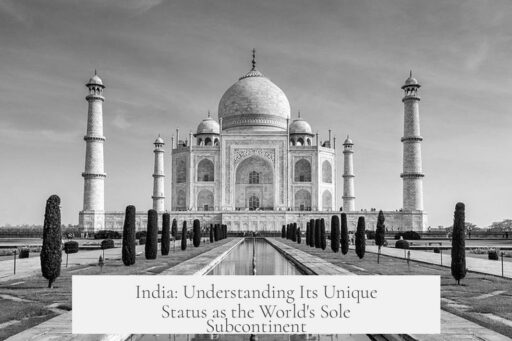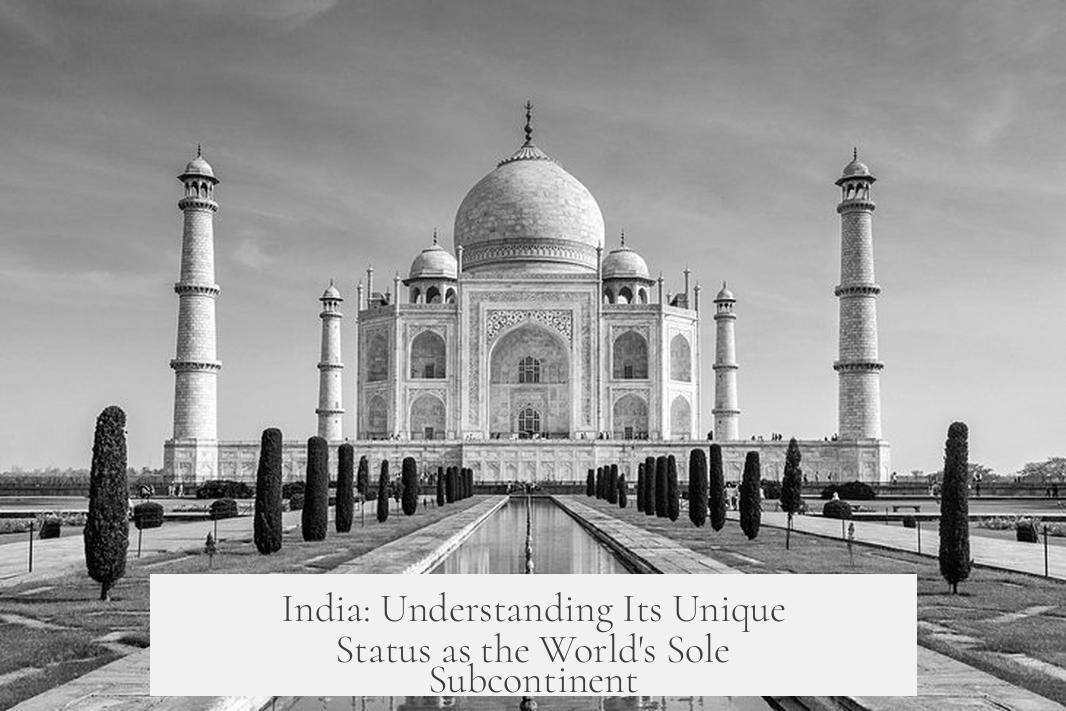India is called a ‘subcontinent’ because it forms a large, distinct landmass within Asia, defined by unique geographical boundaries, geological history, cultural diversity, and political significance. Its separation by natural features and extensive size set it apart from the rest of the continent, making the term ‘Indian subcontinent’ widely used to denote this region collectively rather than just India as a country.
The notion of a subcontinent refers to a sizable, self-contained land area within a continent with distinct physical, cultural, and political traits. India meets these criteria as it is framed geographically by the Himalayas to the north and the Indian Ocean to the south. This physical separation from the larger Asian landmass lends India a clear geographic identity. The Indian subcontinent stretches into the Indian Ocean, with the Bay of Bengal and the Arabian Sea on either side, forming a prominent peninsular feature of South-central Asia.
Geologically, the Indian subcontinent is mostly situated on the Indian tectonic plate. This plate drifted northward after breaking from the Gondswana supercontinent, eventually colliding with the Eurasian plate. This tectonic movement produced the Himalayan mountain range, a key northern border that geophysically delineates the subcontinent. The Indian Plate covers not just India but extends through present-day Bangladesh, Pakistan, Nepal, Bhutan, and parts of surrounding areas such as Sri Lanka and the Maldives. It also touches parts of eastern Indonesia and southern China, but excludes regions such as Kohistan, Ladakh, Balochistan, and the Hindu Kush. The tectonic story underpins the subcontinent’s physical separateness.
Culturally and politically, the Indian subcontinent comprises multiple countries: India, Pakistan, Bangladesh, Nepal, Bhutan, Sri Lanka, Maldives, and sometimes Afghanistan. These countries share historical ties, similar climatic zones, and overlapping cultural ecosystems. The naming “Indian subcontinent” often serves linguistic clarity, distinguishing the larger region from just India, since India alone is a country while the subcontinent includes multiple nations. Unlike other known subcontinental regions such as Sub-Saharan Africa or Mesoamerica, which have no single country named similarly, the label helps clarify discourse especially in political, economic, or historical contexts.
The term “Indian subcontinent” became widespread during British colonial rule, encompassing British India and princely states. Post-independence, the term sometimes causes political sensitivities due to India’s dominant place in the name. Alternatives such as “South Asia” or “South Asian subcontinent” exist to emphasize inclusivity and neutrality, avoiding associations solely with modern India. Depending on context, some use “Indo-Pak subcontinent” or exclude island nations like Maldives and Sri Lanka.
| Factor | Details |
|---|---|
| Geographical Boundaries | Himalayas to the north, Indian Ocean, Arabian Sea, Bay of Bengal surround the region. |
| Geological Basis | Located on Indian Plate, distinct tectonic evolution forming Himalayas and peninsular South Asia. |
| Cultural Diversity | Includes multiple countries with diverse ethnic groups, languages, and historic civilizations. |
| Political Significance | Regional cooperation via SAARC; India as dominant state but inclusiveness of neighbours. |
| Area Covered | Approx. 4.4 million sq km; about 10% of Asia’s landmass. |
The Indian subcontinent covers roughly 4.4 million square kilometers, accounting for about 10% of Asia’s land area and 2.4% globally. It features varied climates—from tropical in the south to alpine near the Himalayas—but overall a relatively unified climate zone compared with broader Asia’s diversity.
While India is the most recognized subcontinent, other large regions like Sub-Saharan Africa or Mesoamerica are also called subcontinents in academic literature. However, these names are less common in general discourse since those regions lack a single nation-state analogous to ‘India.’ This lack of a clear political anchor may explain why “Indian subcontinent” is a more enduring and familiar label.
In summary, India’s status as a subcontinent rests on:
- Distinct natural boundaries and geographic features—Himalayas and surrounding oceans create natural separation.
- Unique geological origin—Indian tectonic plate with significant tectonic history.
- Cultural and ethnic diversity spanning multiple countries forming a distinct socio-political ecosystem.
- The presence of defined political entities cooperating regionally, enhancing the subcontinent as a unit.
- Wide usage and recognition in linguistic, historical, and academic contexts.
These combined factors make the Indian subcontinent a technically and culturally meaningful term. Other regions may qualify too, but political and linguistic clarity explain the widespread adoption of this label exclusively for the South Asian landmass.
- “Subcontinent” signifies a large, self-contained landmass within a continent.
- India is not the only subcontinent, but uniquely prominent due to geography, geology, and political-cultural identity.
- Indian subcontinent includes multiple countries beyond India itself.
- The Himalayas and surrounding seas geographically isolate the Indian subcontinent from the rest of Asia.
- The Indian tectonic plate shapes its physical distinctiveness.
- Political usage and sensitivities influence terms like “South Asia” and “Indian subcontinent.”




